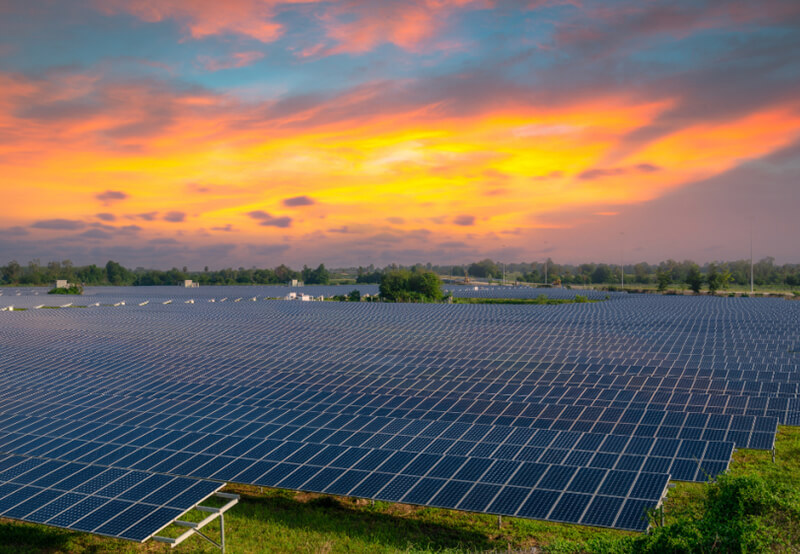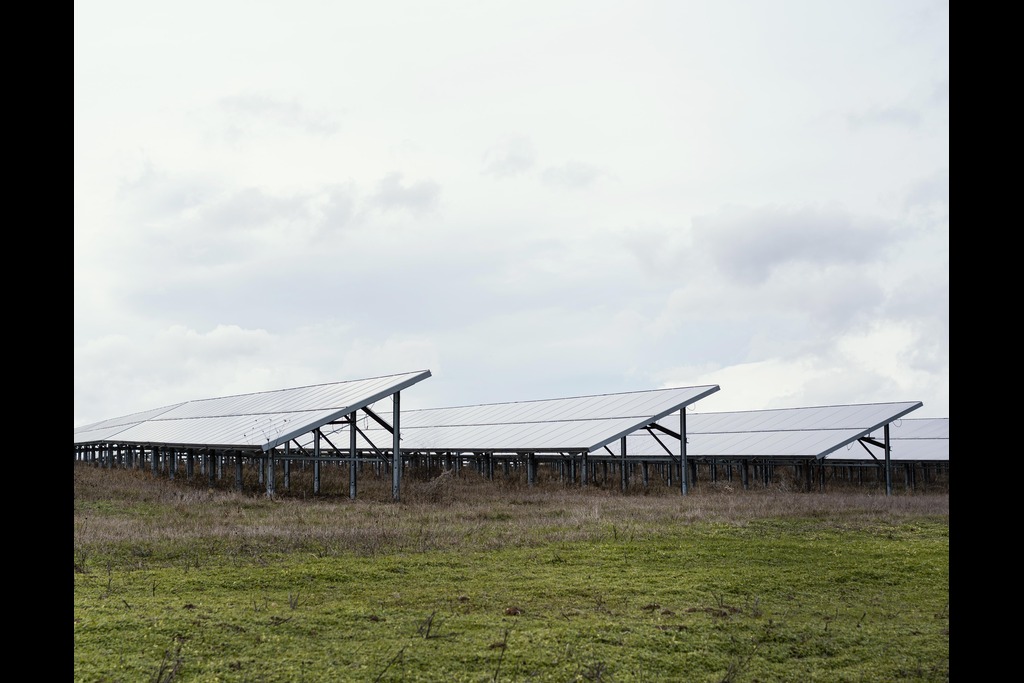Concentrated Solar Power: A Rising Force in Renewable Energy
Concentrated solar power (CSP) has been one of the most influential sources of the global energy transition as the world races into a beautiful and more sustainable future. As photovoltaic (PV) solar panels make most of the headlines, CSP is wrangling what can be seen as a silent but growing effectiveness, with some distinct benefits that lead to creation of jobs, innovation in technology, and energy sustainability in the long-term.

What Is Concentrated Solar Power?
Let’s begin with the concentrated solar power definition. Concentrated solar power is renewable energy technology where sunlight is collected in an array on a small receiver using the use of mirrors or lens. This is radiating light on something to be heated using fluid to generate steam to drive a turbine in the electricity production.
Contrary to a typical solar PV system, where sunlight is converted directly into electricity, CSP relies on thermal energy and typically has the ability to store the energy too. This makes CSP, especially helpful in power provision even during the times when the sunshine is lacking.
Advantages of Concentrated Solar Power
There are various advantages that are offered by CSP. Here are some of the most impactful advantages of concentrated solar power:
1. Energy Storage Capability: Among CSP outstanding capabilities, one must mention the possibility to incorporate thermal energy storage systems. This enables energy to be captured and utilized when the skies are less sunny or at night since this is one of the major setbacks of using solar PV systems.
2. Grid Stability and Dispatchability: Due to the ability to store energy and generate it on demand, CSP plants support grid stability and provide dispatchable renewable energy, which is also a critical capability regarding energy security.
3. Lower Carbon Footprint: CSP also produces clean power as found in fossil fuels which are harmful to the atmosphere. The process used by it is thermal which produces minimal greenhouse gases during operation and hence a major player in the fight against global warming.
4. Job Creation and Local Economic Growth: CSP projects are commonly characterised by substantial infrastructure that results in the development of Medium to Long term jobs in construction, maintenance, engineering and operations. Such jobs normally remain in the area; this expands local economies.
5. Ideal for Desert and Arid Regions: CSP works well where the direct normal irradiance (DNI) is high, e.g. deserts and arid lands, which are not always ideal territory to crop or develop urban areas. This helps in easier efficiency in land-use.
Disadvantages of Concentrated Solar Power
Despite its many benefits, there are several disadvantages of concentrated solar power that must be considered:
1. High Capital Cost: Compared to PV systems, CSP plants are more expensive because of mirrors, tracing systems and storing systems which require immense investment.
2. Geographic Limitations: CSP needs a sustained direct sunlight, so is not suited to cloudy areas or high latitude areas but suits countries in the sunbelt, which include the Middle East, North Africa and the American Southwest.
3. Large Land Requirements: Concentration of sunlight and thermal storage requires more land in CSP systems than PV systems, and in crowded regions this may be limiting.
4. Water Usage: CSP plants that use steam turbines tend to need to use water as a coolant, an issue in arid areas. This factor is being minimized using dry-cooling technologies.
Concentrated Solar Power Efficiency: How Does It Compare?
Concentrated solar power efficiency is often questioned, especially when compared to photovoltaic systems. The current estimated thermal efficiency range of CSP plants varies between around 30% to 50% relying on the plan of the system and the incorporation of storage. Although PV systems contain greater panel conversion efficiencies (1522%), CSP can also produce a more stable source of power throughout a 24-hour cycle since it can store energy.
By taking into consideration both storage and dispatchability, CSP is usually efficient when considering large utility-scale projects. It can support peak loads and offer large load reserves without necessarily tapping into backup power plants thus making the system have a better overall efficiency.
Global Adoption: A Snapshot of CSP Development
Countries that have powerful sunlight and energy security issues are also adopting CSP technologies. So, what are some of the global trends?
Spain: Spain dominates the CSP revolution in Europe. Having more than 2.3 GW of installed CSP, the country has established a strong ecosystem of solar thermal plants. During daytime a solar thermal plant with molten salt storage, such as Gemasolar, demonstrates CSP has future potential to be used as a 24/7 resource.
United States: Some of the CSP facilities in the U.S. are located in California and Nevada states. In an example, Crescent Dunes Solar Energy Project uses molten salt storage to supply the electricity even at night.
China and the Middle East: Saudi Arabia, UAE and China are massive investors in CSP as part of a wider clean energy focus. The solar park in Dubai, Mohammed bin Rashid al-Maktoum Solar Park will feature a 700 MW CSP tower and CSP trough system- one of the largest in the world.
Innovation in Concentrated Solar Power Technology
The CSP environment is undergoing changes with the introduction of new technology being designed to enhance its performance, reduce cost, and diversify their uses.
1. Next-Gen Heat Transfer Fluids: Innovative materials that included supercritical CO 2 and next-generation molten salts are being used to substitute traditional oils. Such fluids can sustain higher temperatures and hence better thermal efficiency as well as cost reduction.
2. Integrated Hybrid Systems: There is also development of hybrid systems that integrate CSP with PV or fossil fuels to boost the reliability and the efficiency. Such systems have the capacity to offer baseload supply and slash emissions.
3. Automated Cleaning and Maintenance: A big challenge with CSP systems in desert areas is buildup of dust. The new robotic cleaning systems allow to decrease the number of utilized water and increase the degree of panel reflectivity without manual work.
CSP and Energy Security
In the current geopolitical environment, energy security has become a concern. Most nations wish to be less dependent on foreign fossil fuels, and concentrated solar power offers a way to self-reliance.
CSP can:
- Reduce dependence on volatile energy markets.
- Provide stable and predictable energy costs.
- Enhance grid resilience through thermal energy storage.
Investment and planning in the right quantities, CSP can be a pillar of national energy policy, particularly for solar-rich countries of the global south.
CSP and the Job Market
CSP projects drive job creation across multiple sectors, including:
- Engineering and Design: System architecture, mechanical design, and software development.
- Construction: Site preparation, mirror installation, and plant assembly.
- Operations and Maintenance: Technicians, safety officers, and plant managers.
- Research and Development: Innovating new CSP technologies and optimizing system performance.
According to IRENA (International Renewable Energy Agency), CSP creates more jobs per megawatt than conventional energy sources, especially in developing economies with high solar potential.
The Future Outlook of CSP
The future of CSP appears bright. With advancing storage technology and declining costs, CSP has the potential to be a mainstream energy solution. Some of the trends to monitor include:
- Policy support and incentives: Governments with tax relief and feed-in tariffs are increasing CSP feasibility.
- Funding and collaboration: Global collaborations are hastening CSP deployment in the emerging world.
- Sustainability ambitions: CSP is converging with the global net-zero ambitions, and green investors are paying attention.
Conclusion
Concentrated solar power is more than yet another renewable energy solution, it also presents the promise of both novelty and strength in an ever changing energy environment. Sporting a synergy of thermal storage, potential jobs, and long-term grid stability, CSP has a voice within the sound of sustainable energy systems.
However, it’s important to weigh both the advantages of concentrated solar power and the disadvantages of concentrated solar power when planning for large-scale implementation. With advancements in concentrated solar power efficiency, and increased global awareness, the rise of CSP is not just a trend—it’s a transformative movement.
With the world moving rapidly towards renewable energy, concentrated solar power will become one of the sun-destined brightest potential not only as a technology wonder but also due to its hope as the potential path to a cleaner, safer, and more equal energy future.
Frequently Asked Questions (FAQs)
Concentrated solar power (CSP) is a renewable energy technology that uses mirrors or lenses to focus sunlight onto a small area. The concentrated heat is then used to generate steam that drives a turbine to produce electricity. Unlike solar PV, CSP works by converting thermal energy, not sunlight directly into electricity.
The key advantages of concentrated solar power include energy storage capability, grid stability, low carbon emissions, job creation, and suitability for sun-rich regions. CSP plants can generate electricity even after sunset, thanks to integrated thermal energy storage systems.
Some disadvantages of concentrated solar power are high installation costs, geographic limitations, large land requirements, and water usage for cooling. However, ongoing innovation is addressing many of these challenges.
Concentrated solar power efficiency ranges from 30% to 50%, depending on the system type and storage technology. While PV panels may have higher initial conversion rates, CSP offers better efficiency in delivering consistent power over longer periods due to its storage capabilities.
Unlike PV panels that convert sunlight directly into electricity, concentrated solar power systems use mirrors to focus sunlight into heat, which then drives turbines. CSP systems can store heat for use at night, offering a key advantage in energy dispatchability.












